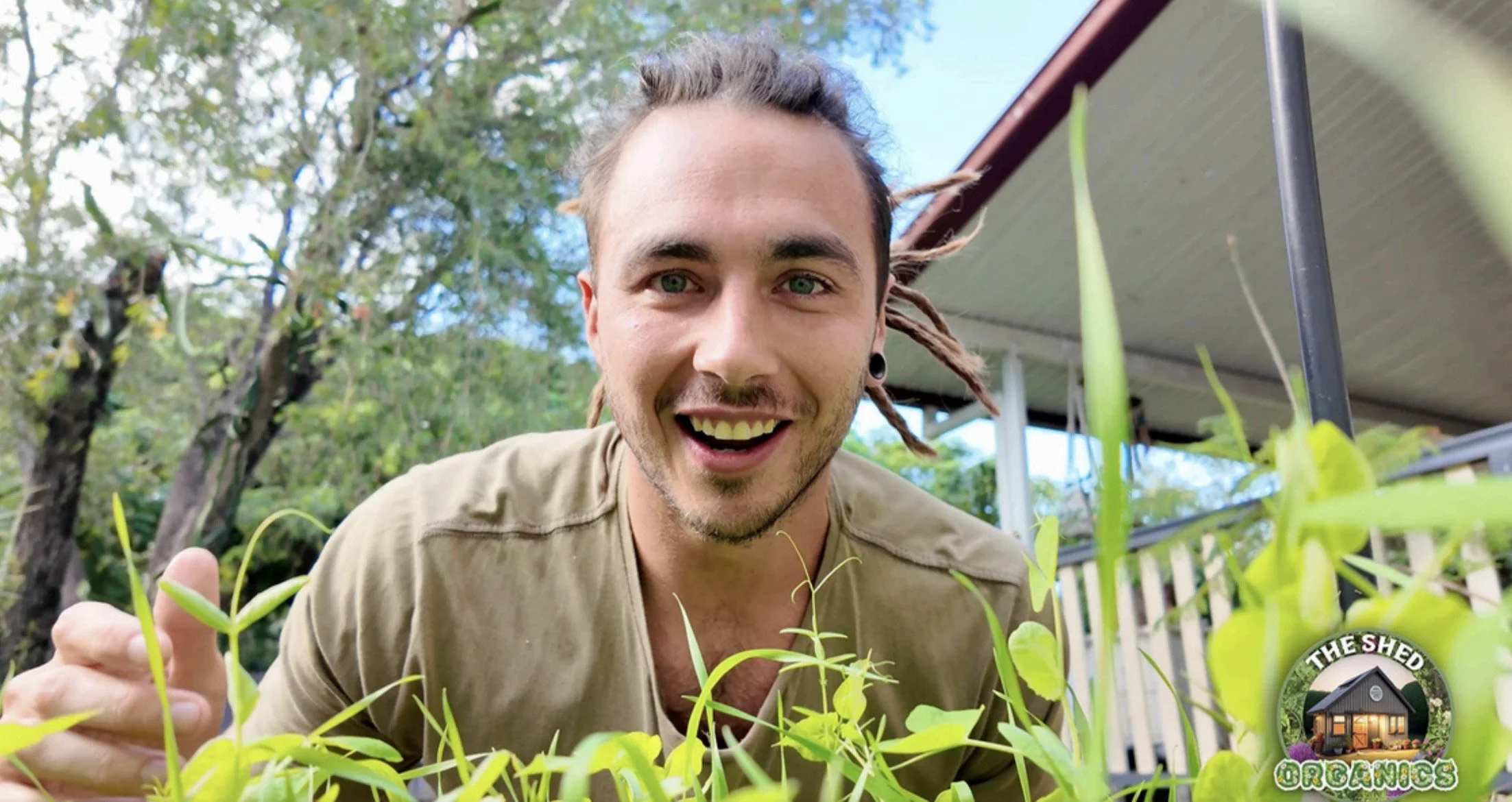Healthy Soil, Healthy Gardens: Jordan Alexander Shares How to Rebuild Life Beneath Our Feet
Healthy soil is more than the foundation of a good garden — it’s about creating a living ecosystem, teeming with microscopic life. In the latest episode of The Gardener’s Lodge podcast, host Mykal Hoare speaks with Jordan Alexander of The Shed Organics, who explains how gardeners can work with natural processes to build robust living soils at any scale.
“Healthy soil is almost an exact replica of what goes on inside our gut,” Jordan says. “We think a lot about our microbiome — eating diverse foods, getting sunlight, sleeping properly. Soil needs the same kind of attention. We’re trying to stimulate that microbiome underground.”
Jordan showing off his cover crops in action.
According to Jordan, the key is to replicate nature’s own systems rather than constantly fighting against them. He points to forests as the perfect example of a closed-loop soil cycle.
“In a forest, no one’s going in and turning over the soil,” he explains. “Leaves drop, animals pass through, insects die — and all of that organic matter forms a mulch layer. Underneath, microbes and worms break it down and turn it into plant-available nutrients. The system feeds itself, over and over.”
One of Jordan’s main principles is no-till gardening, which is the opposite of how large scale farming practices to enhance fertility in the short term, but reality shows that tilling year after year harms soil health and fertility in the long term, leading to synthetic/chemical fertiliser dependency. No-till helps preserve these delicate underground networks and connections, cruitually fungal systems.
“Mycelium is the body of the fungus — a massive network under the ground,” Jordan says. “They share resources and communicate with plant roots. If we go in and dig everything up, we’re disrupting that communication system. So the less we interfere, the better.”
He also shares practical strategies for gardeners to rebuild depleted or sterile soils, such as using a diverse cover crop mix to add organic matter, break up compaction, and attract beneficial microbes.
“I use a 15-seed blend — legumes for nitrogen fixing, daikon for deep tap roots, grasses, clover, mustard, millet, vetch,” Jordan explains. “More than 12 species gives you the microbial diversity you need. Different plants bring different microbes into the root zone. That’s the magic.”
For gardeners working in containers, Jordan offers a simple soil recipe that can be adapted anywhere: 30% aeration, 30% structure, 30% compost or worm castings. He prefers pumice for aeration, coconut coir for structure, and high-quality compost to provide life and nutrients.
“You can bring a dead, sterile potting mix back to life,” he says. “Start with compost or worm castings, throw in some cover crops, keep adding organic matter and microbes. Over time, you’ll see the soil come alive again.”
Jordan cautions against relying too heavily on synthetic fertilizers.
“With synthetic NPK’s, (fertilisers), you’re feeding the plant directly, but not the soil,” he explains. “It’s like giving supplements instead of real food. When those nutrients run out, there’s nothing in the soil to sustain the system.”
His message is clear: building soil is a long-term, regenerative process, not a quick fix. But the results — healthier plants, greater resilience, and thriving ecosystems — are well worth the effort.
🎧 Listen to the full episode of The Gardener’s Lodge podcast featuring Jordan Alexander to learn more about the science and practice of soil health.
🌐 theshedorganics.com.au


